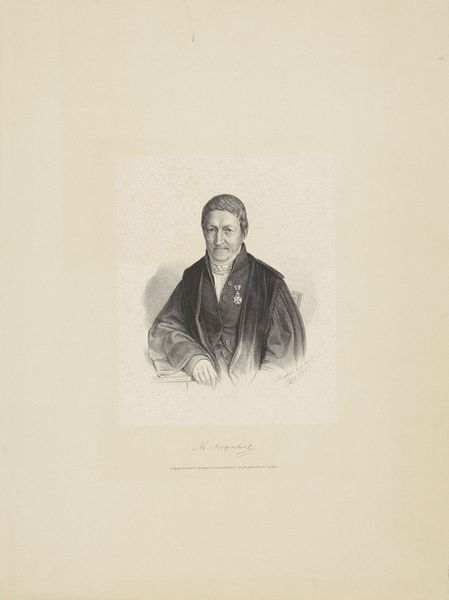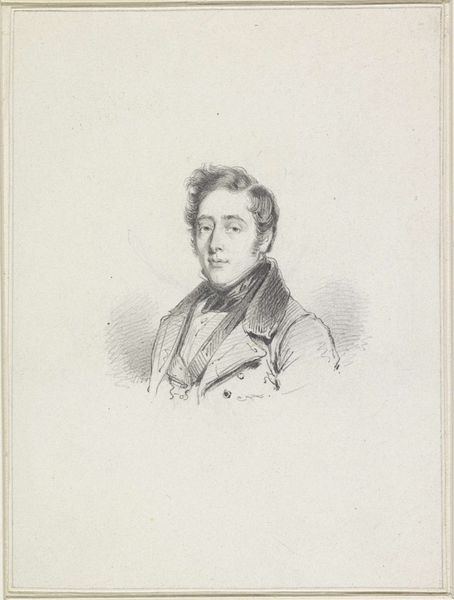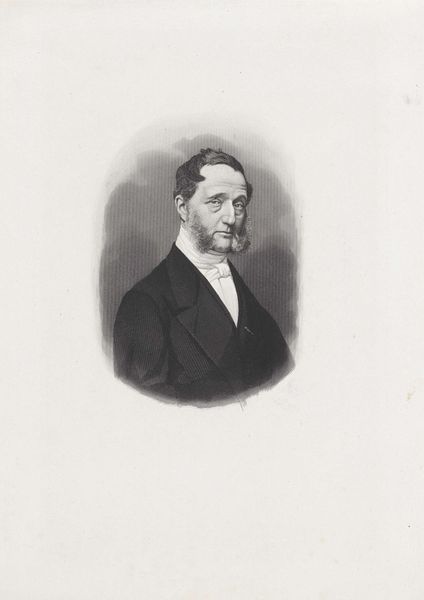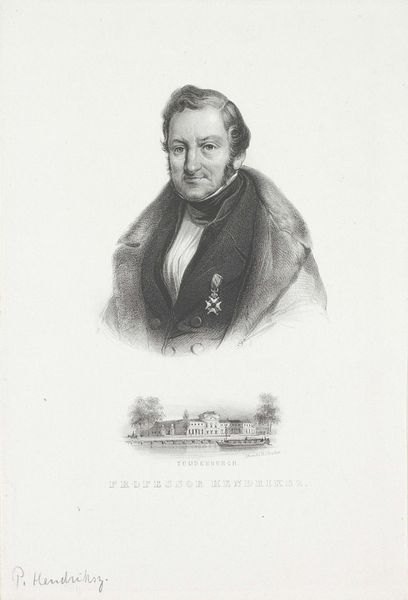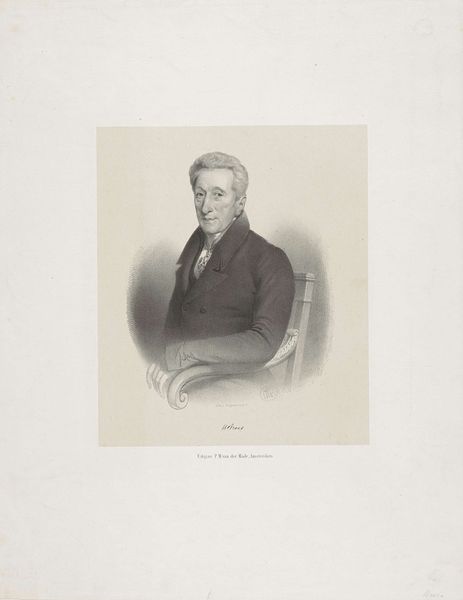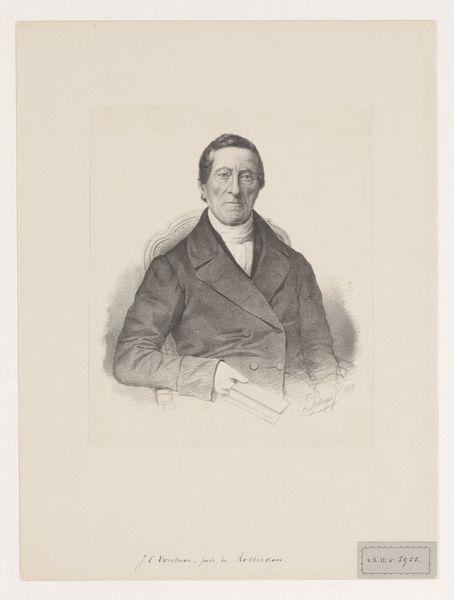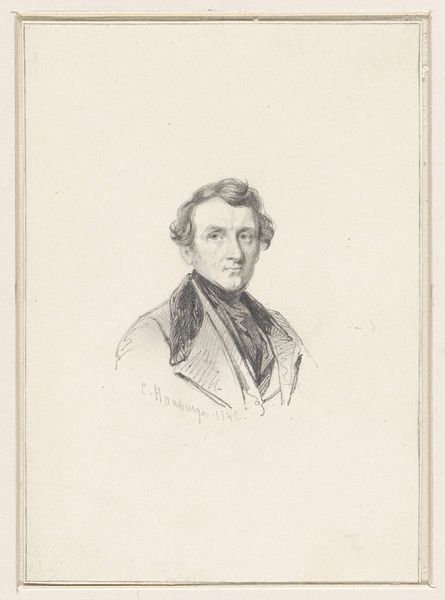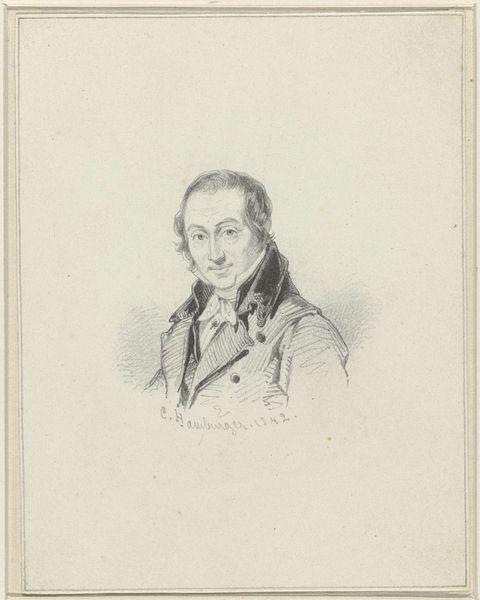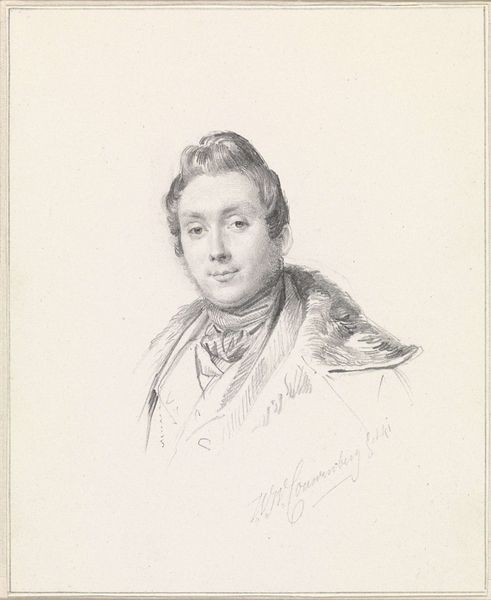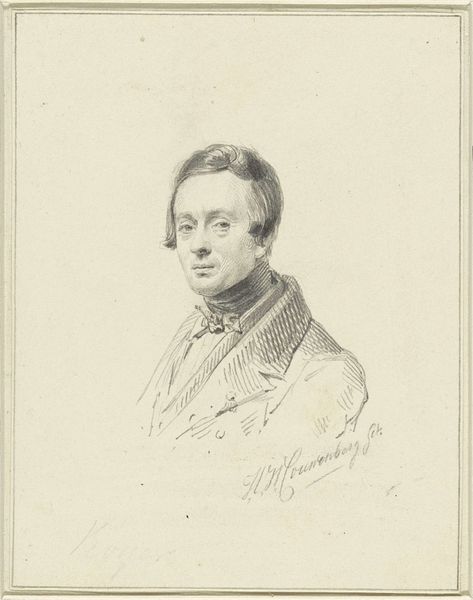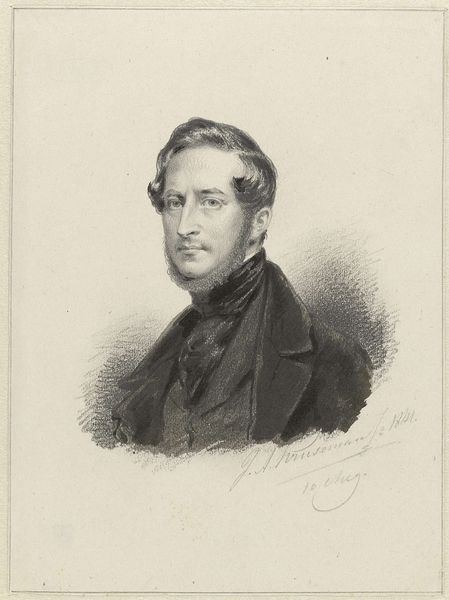
drawing, pencil, graphite
portrait
pencil drawn
drawing
pencil sketch
charcoal drawing
pencil drawing
pencil
graphite
portrait drawing
realism
Dimensions: height 445 mm, width 315 mm
Copyright: Rijks Museum: Open Domain
Curator: Standing before us is a portrait drawing rendered in graphite and pencil of P. Hendriksz. This artwork, currently residing in the Rijksmuseum, was created sometime between 1826 and 1854 by Gerhardus Fredericus Eilbracht. Editor: The texture immediately strikes me. Look at the soft blending of the graphite – it creates a wonderful, almost luxurious depth, particularly in the fur collar and the fabrics of his suit. Curator: Indeed, it speaks to the period's evolving relationship with portraiture, doesn’t it? Consider the rise of the middle class and their aspiration to visibility. Portraits shifted from being solely the domain of the aristocracy, becoming more accessible through drawing and printmaking. Editor: Accessible, yes, but also strategic. Notice the detail lavished on the man’s clothing and the carefully rendered star. There is clear attention to depicting status and conveying wealth, all meticulously crafted using graphite. It almost feels performative. Curator: Exactly. And how Eilbracht captured the likeness matters politically and socially. This portrait is, in essence, an advertisement—both for Hendriksz and for Eilbracht’s artistic capabilities. Displaying this ensures continued patronage and cultural influence. Editor: I'm also drawn to the paper itself. The aging contributes to the effect, the material support becomes just as vital as the mark making. Can we really separate the paper quality and graphite pencils available to Eilbracht, or even how he sourced these materials from the message conveyed? Curator: Absolutely! Materials deeply inform the message and market. The use of drawing as the medium highlights its accessibility as both method and artwork to the wider community. Editor: So, looking again, I appreciate how both material limitations and cultural expectations would have driven this composition and detail. Curator: And I appreciate how you bring those production-based values to the historical interpretation of the artwork. It reminds us that even something as seemingly straightforward as a portrait drawing exists within a complex social and material world.
Comments
No comments
Be the first to comment and join the conversation on the ultimate creative platform.
